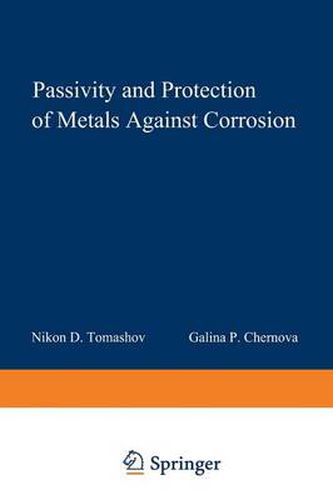Readings Newsletter
Become a Readings Member to make your shopping experience even easier.
Sign in or sign up for free!
You’re not far away from qualifying for FREE standard shipping within Australia
You’ve qualified for FREE standard shipping within Australia
The cart is loading…






This title is printed to order. This book may have been self-published. If so, we cannot guarantee the quality of the content. In the main most books will have gone through the editing process however some may not. We therefore suggest that you be aware of this before ordering this book. If in doubt check either the author or publisher’s details as we are unable to accept any returns unless they are faulty. Please contact us if you have any questions.
Considerable progress has been made in the past 20 years toward understanding the basic mechanisms of corrosion, and the application of this knowledge to its control. From the very beginning, educational institutions and industrial research laboratories have contributed greatly toward determining and elucidating the fundamental principles of corrosion reactions. Some of the basic principles involved in cor rosion of metals can be credited to early investigators. Michael Faraday in 1830-1840 studied the relationship between the quantity of a metal dissolved and the electric current which was produced by this reaction. He also proposed that the passivation of iron was through the formation of a film and that the dissolution of a metal was electro chemical in nature. Sir Humphrey Davy in 1824 worked out the funda mentals of galvanic corrosion of ships’ hulls and applied sacrificial zinc anodes to protect them from sea water corrosion. Richard Arlie in 1847 demonstrated that corrosion produced by oxygen at the surface of iron in a flowing stream generated a current. With the fundamental knowledge available to him from these early investigators, Willis Rodney Whitney developed and expressed, in its most useful form, one of the basic scientific principles which provides modern corrosion specialists with a fundamental basis of corrosion control. Dr. Whitney concluded that corrosion of iron is electrochemical, and that the rate is simply a function of the electromotive force and resistance of the circuit.
$9.00 standard shipping within Australia
FREE standard shipping within Australia for orders over $100.00
Express & International shipping calculated at checkout
This title is printed to order. This book may have been self-published. If so, we cannot guarantee the quality of the content. In the main most books will have gone through the editing process however some may not. We therefore suggest that you be aware of this before ordering this book. If in doubt check either the author or publisher’s details as we are unable to accept any returns unless they are faulty. Please contact us if you have any questions.
Considerable progress has been made in the past 20 years toward understanding the basic mechanisms of corrosion, and the application of this knowledge to its control. From the very beginning, educational institutions and industrial research laboratories have contributed greatly toward determining and elucidating the fundamental principles of corrosion reactions. Some of the basic principles involved in cor rosion of metals can be credited to early investigators. Michael Faraday in 1830-1840 studied the relationship between the quantity of a metal dissolved and the electric current which was produced by this reaction. He also proposed that the passivation of iron was through the formation of a film and that the dissolution of a metal was electro chemical in nature. Sir Humphrey Davy in 1824 worked out the funda mentals of galvanic corrosion of ships’ hulls and applied sacrificial zinc anodes to protect them from sea water corrosion. Richard Arlie in 1847 demonstrated that corrosion produced by oxygen at the surface of iron in a flowing stream generated a current. With the fundamental knowledge available to him from these early investigators, Willis Rodney Whitney developed and expressed, in its most useful form, one of the basic scientific principles which provides modern corrosion specialists with a fundamental basis of corrosion control. Dr. Whitney concluded that corrosion of iron is electrochemical, and that the rate is simply a function of the electromotive force and resistance of the circuit.